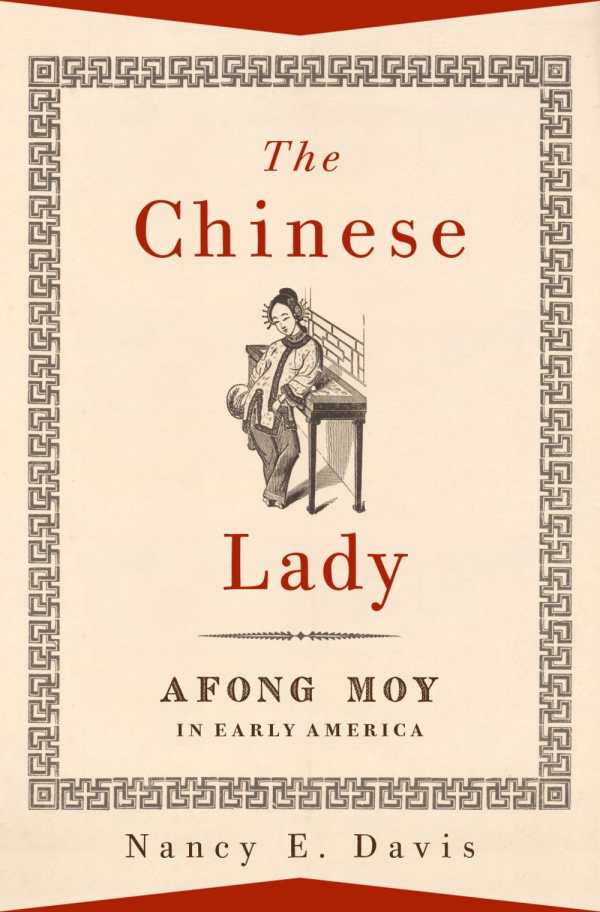The Chinese Lady
Afong Moy in Early America
Nancy E. Davis’s The Chinese Lady applies historical detective work to document the life of Afong Moy, who took an unusual journey through nineteenth-century America. It reveals much about the young United States, its view of other cultures, and its more and more voracious demand for consumer goods and cheap entertainment.
Afong Moy took a merchant ship from southern China to New York City in 1834. Details of her arrangement with her sponsors are slim, but Davis teases out her whereabouts for the next seventeen years. She first worked as the exotic product ambassador for a wholesale importer who capitalized on the burgeoning American appetite for shawls, fans, fancy goods, and cheaper imitations of European luxury items. But after an arduous 1,000-mile tour, Moy’s audiences dwindled, and she ended up in the employ of seamier theatrical managers, including P. T. Barnum. She became a sideshow curiosity because of her bound feet and “life of incomprehensible separateness.” She ended up as an almshouse ward before vanishing from the historical record completely.
Mining a surfeit of broadsides, archives of letters of those who attended Moy’s performances, newspaper accounts, auction and commercial records, and decorative objects from China, the book documents where Moy traveled and how Americans viewed her with historical accuracy. It also speculates about details of her personal life, what she might have thought of American culture, and how she may have felt when faced with the likelihood of being marooned in an unfamiliar land.
Intriguing and authoritative, The Chinese Lady examines themes from the turbulent nineteenth century, including the rise of the middle class, the development of American nationalism and race theory, and the effects of unregulated banking and land speculation. These notions are masterfully reflected in the melancholy tale of an immigrant cast aside in the whirlwind.
Reviewed by
Rachel Jagareski
Disclosure: This article is not an endorsement, but a review. The publisher of this book provided free copies of the book to have their book reviewed by a professional reviewer. No fee was paid by the publisher for this review. Foreword Reviews only recommends books that we love. Foreword Magazine, Inc. is disclosing this in accordance with the Federal Trade Commission’s 16 CFR, Part 255.

